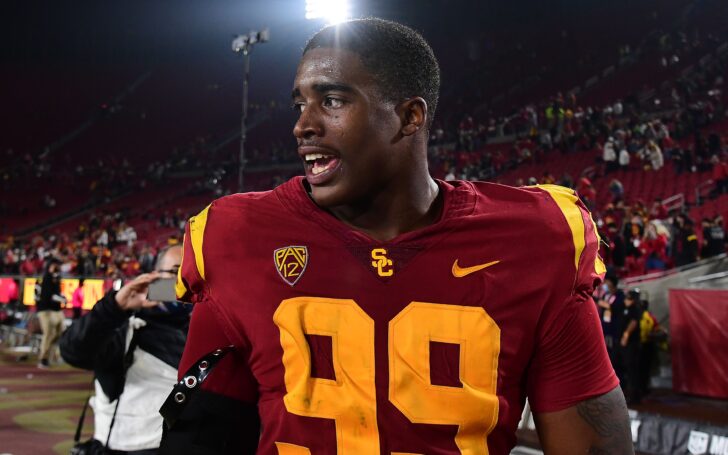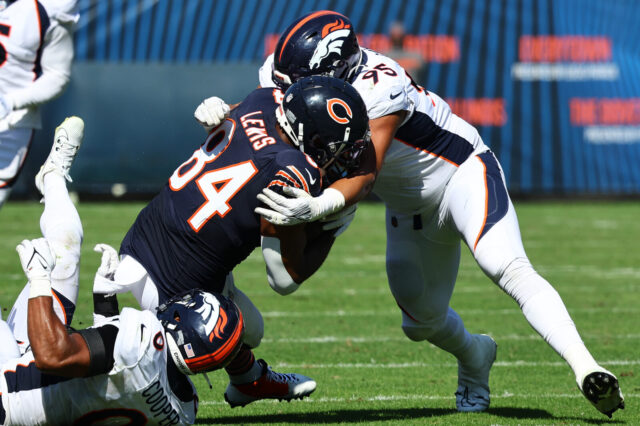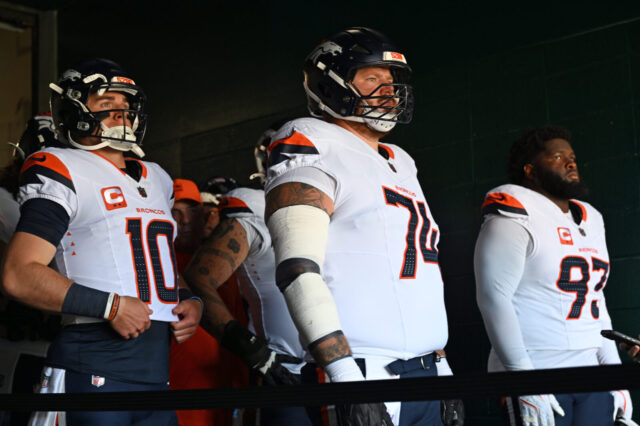In what has become a pass-centric NFL, the name of the game is affecting the quarterback. It’s the most important position on the field, so loading up on quality pass rushers in hopes of having a rotation that can consistently bring pressure is invaluable for NFL defenses.
For the Broncos, the edge rusher position has a ton of questions surrounding it. Specifically, their starters, Bradley Chubb and Randy Gregory, both have missed a slew of games throughout their career, leaving concerns about their durability. Even deeper than that, their depth doesn’t look to be sufficient enough to replace either starter at a high enough level to feel comfortable with these injury concerns.
With Chubb’s injury-riddled past and contract coming to an end in the near future, it would be wise of George Paton to take a long look at the edge rusher position in this year’s NFL draft, tackling not only depth for this season but securing a long term option at what has become one of the most important positions in the league. Luckily for him and the Broncos organization, this year’s draft has a plethora of options to choose from.
Drake Jackson, University of Southern California
Coming into this past college football season, Jackson was one of the more intriguing edge options and could consistently be found in the first round of NFL mock drafts. Boasting a hyper-athletic physical profile, scouts had predicted a big jump in Jackson’s production this prior season but that, unfortunately, never substantiated as there are still questions about his lack of production.
Nonetheless, Jackson at 6’3″ and 255 pounds, has the tools NFL scouts salivate over when projecting prospects at the edge rusher position. Specifically, Jackson has unreal explosiveness and lateral ability. Often moving like a wide receiver, Jackson has a tremendous get-off that he can utilize to beat tackles around the edge with and the quickness to stop on a dime and counter with.
While this level of speed and quickness at the edge position is valuable, Jackson has serious concerns with his play strength. Jackson’s lower half isn’t up to par, affecting both the run and pass. He simply just does not pack enough of a punch in the pass and is moved around too easily in the run. At the moment, this is Jackson’s biggest weakness that must be improved upon to have a long and successful NFL career.
At the end of the day, Jackson is a projection at the NFL level but with his unusual and difficult-to-find physical tools, he could develop nicely, one day becoming a great pass rusher.
Nik Bonitto, University of Oklahoma
Bonitto, smaller than the average edge rusher, had an extremely impactful colligate career, finishing with 19.5 sacks through his three years of receiving serious playing time.
Winning with great speed and agility, Bonitto is very much a high twitch athlete for his position. His fantastic movement skills made him a massive challenge for college-level tackles to block, often winning his reps with an array of finesse moves. Whether it be through spins, swims, or inside counters, Bonitto is an extremely tough cover in obvious pass-rush situations.
While Bonitto’s smaller frame lends itself well to his movement skills, it is also the biggest weakness of his game. At 6’3″ and 247 pounds, he just does not have the length nor play strength needed to consistently convert speed to power in the pass or hold up in the run. This concern could ultimately limit Bonitto’s role to being a rotation piece or pass-rush specialist at the next level.
The potential of this limited role will and has hurt his draft stock up until this point but should not completely diminish it. As stated earlier, having a rotation of pass rushers is essential in today’s NFL and if there is one thing Bonitto can do at a high level, it is getting after the quarterback.
Myjai Sanders, University of Cincinnati
At 6’5″ and 247 pounds, Sanders possesses an intriguing mix of physical attributes that NFL teams will most definitely value. That mix being explosiveness and length, Sanders has the potential to win in a multitude of ways but none more efficient than his speed to power. Sanders’ timing and straight-line speed affords him the ability to get upfield in a hurry, where then his long and lengthy frame is utilized to win the leverage battle, ultimately affecting the quarterback.
Much like the other two prospects included on this list, Sanders does not have great play strength, making him easy to seal off in the run game. This is an area Sanders must improve upon and will ultimately make him much more of a complete player. Until this is improved upon, Sanders will be better utilized in a rotation rather than being an every-down player.
Sanders also has struggled with his bend around the edge. While not every player has to be Von Miller and Sanders has flashed bend on occasion, it has not shown nearly enough to be something you can rely on at the moment.



